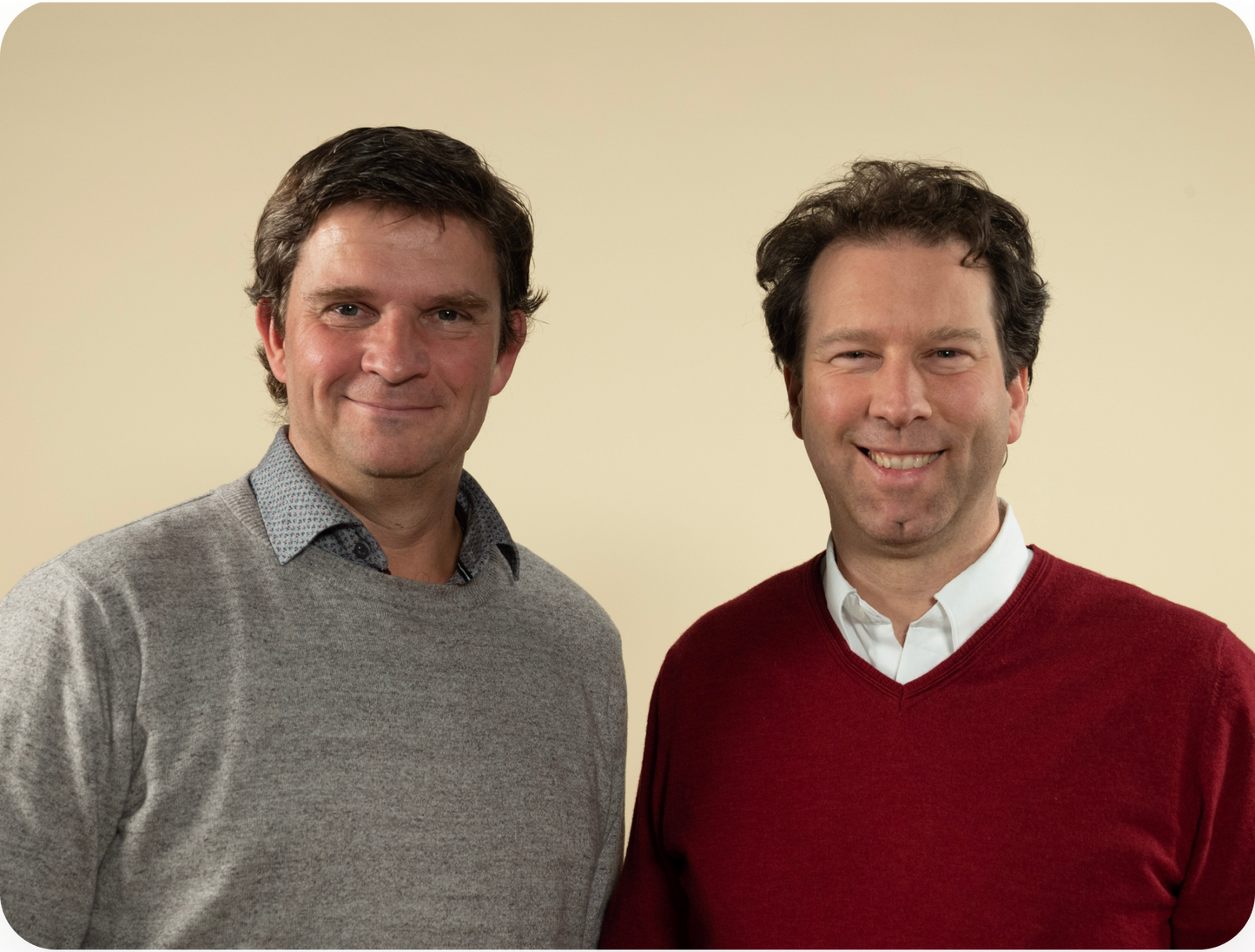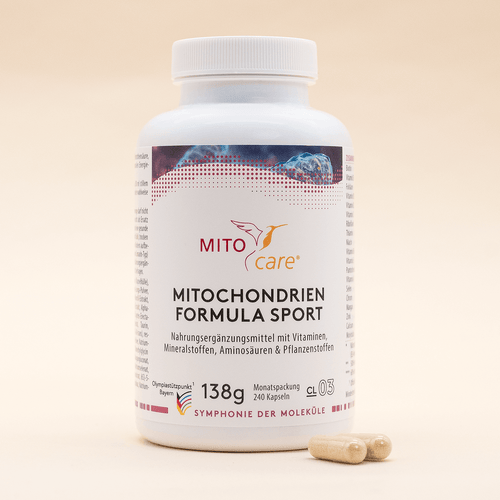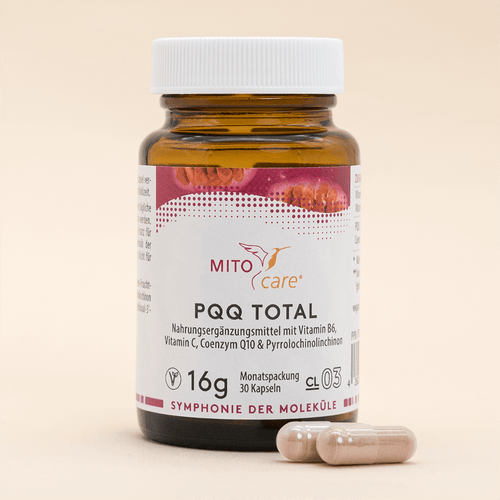Themen dieses Blogartikels:
Table of contents
- What are mitochondria in simple terms?
- How mitochondria support ATP production
- Mitochondrial structure: Mitochondria are made up of these components
- Special features: Mitochondrial DNA and independent growth
- Where are mitochondria located and how are they formed?
- The formation of mitochondria fascinates scientists
- Mitochondrial function: power plants of the cell
- What specific tasks do mitochondria have?
- What substances do your mitochondria need?
- What are mitochondrial diseases?
- Why we MITOcare: What's behind our mitochondrial mission
- Mito knowledge for everyone
Introduction
What are mitochondria & what function do they fulfill in your cells?
They are known as the “power plants of the cells”, because without mitochondria, your body lacks the power it needs for everyday life. You can find out all about their importance in the human organism, their function and the structure of mitochondria in this article.
What are mitochondria in simple terms?
Mitochondria are like the organs of your cells: small cell organelles that are found in (almost) every cell. Mitochondria produce over 95% of your cellular energy and are responsible for ensuring that your body always has enough energy to cope with everyday life. And the demand is considerable: you consume energy with every second, every breath, every movement and every thought.
Almost all of your body's biochemical processes depend on a functioning energy supply. Your brain alone requires an average of 500 kilocalories per day. However, this energy must be available in a specific form: Namely as adenosine triphosphate (ATP). The mitochondria provide 90% of this universal energy source.
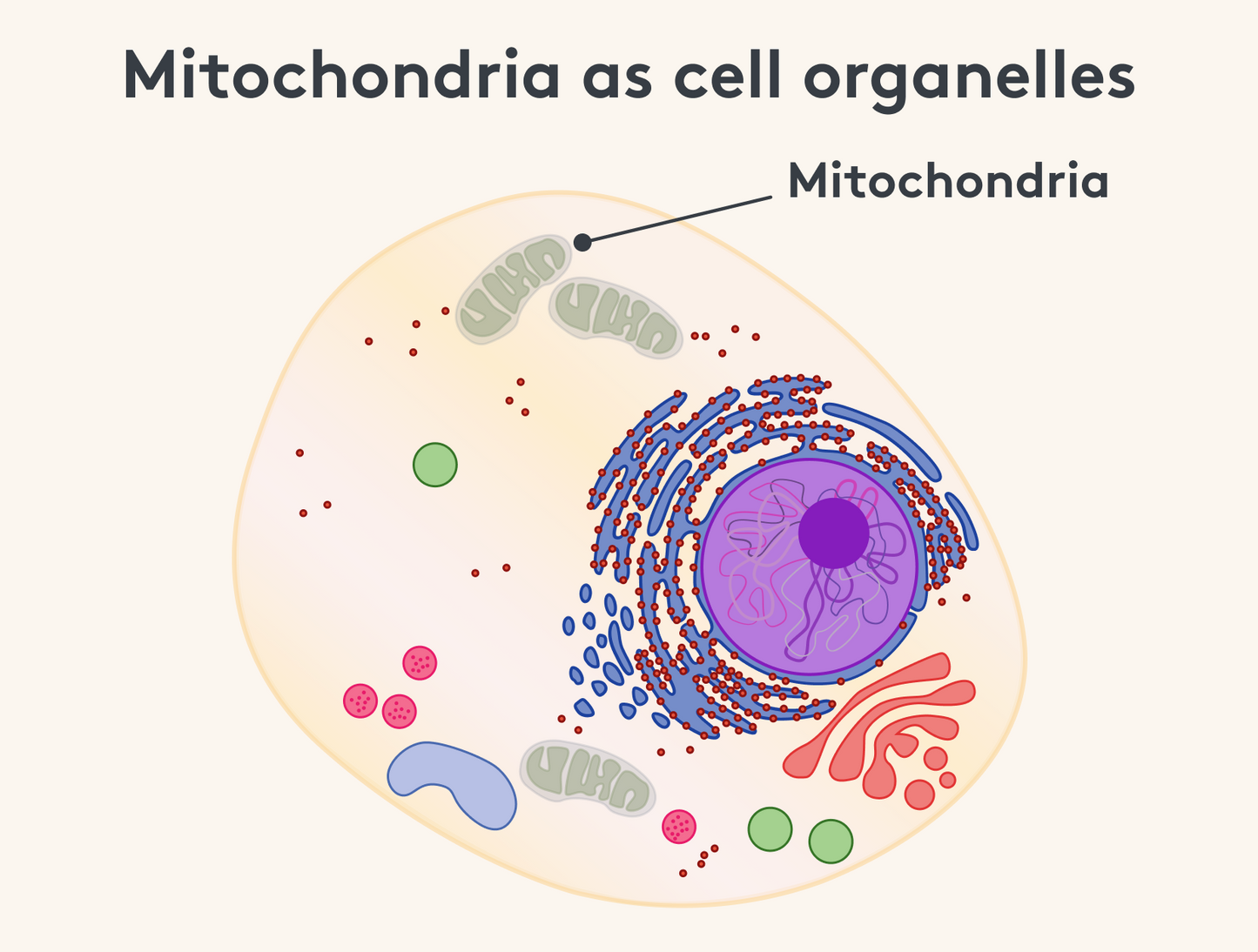

How mitochondria support ATP production
If a reaction is to take place, it rarely works without ATP. It is produced when amino acids, fats and carbohydrates are metabolized in the mitochondria. It is therefore not without reason that they are referred to as the power plants of the cells.
Example: 32 ATP can be produced from one sugar molecule with the help of mitochondria - without mitochondria it would only be 2 ATP. A single fatty acid provides even more ATP: it can be completely metabolized with the help of mitochondria and produce 106 ATP.
Important: For ATP production, glucose is oxidized with oxygen, i.e. basically burned. The energy released is then temporarily stored in the form of ATP. The combustion with oxygen produces so-called oxygen radicals. These are reactive substances that can potentially cause a lot of damage if they are not neutralized with the help of antioxidants. If there are not enough antioxidants, this can lead to cell stress and even cell death.
Mitochondrial structure: Mitochondria are made up of these components
Not only their ability to produce ATP, but also the structure of mitochondria is remarkable. The cell organelles are surrounded by an inner and an outer membrane. The intermembrane space adjoins the outer membrane. This principle of a double membrane ensures that two separate areas are created in a mitochondrion.
Special features: Mitochondrial DNA and independent growth
Mitochondria have their own DNA, called mitochondrial DNA (mtDNA). Unlike other cell components, each mitochondrion has the ability to divide and grow independently of the rest of the cell.


Where are mitochondria located and how are they formed?
Mitochondria are found in every single human cell. Red blood cells are an exception, provided they are counted as cells. Particularly high concentrations of mitochondria are found in egg cells, nerve cells, muscle cells and sensory cells.
Cells with high energy requirements and a fast metabolism contain up to 100,000 mitochondria, which constantly provide energy. In heart muscle cells, mitochondria make up 36% of the volume. Other animals and even plants also have mitochondria. This indicates that they developed early on in evolution.
The formation of mitochondria fascinates scientists
There has been a real hype in the scientific community about mitochondria. One reason for this is mitochondrial DNA and another is the fact that each individual mini power plant can reproduce independently. This ability probably stems from the fact that mitochondria were originally bacteria that formed a symbiotic relationship with a precursor of our cells and worked together with them.
Fortunately, mitochondria are probably one of the reasons why complex organisms consisting of several cells were able to form in the first place.
Mitochondrial function: power plants of the cell
Just as public utilities ensure that your hometown is supplied with energy, that everything runs smoothly on the streets and that people don't drown in waste, mitochondria in your body ensure that everything runs smoothly.
What specific tasks do mitochondria have?
Mitochondria are a decisive factor in energy metabolism and produce ATP. However, they also have many other important functions. These are the most important tasks that mitochondria perform in your body:
- Cell death: when cells are severely damaged or infected, so-called apoptosis sets in. With this controlled cell death, the cell protects its surrounding cells and thus the entire body. Cell death occurs, for example, when a cell suffers from increased oxidative stress or DNA damage. The mitochondrion is partly responsible for triggering cell death: during the process of apoptosis, cytochrome C is released from the cell's mitochondrion into the cytoplasm and joins up with proteins. This activates enzymes that break down the cell.
- Substance synthesis: An important mitochondrial function is the synthesis of substances. The steroid hormones cortisol, oestrogen and testosterone are synthesized in the mitochondria - from the basic molecule cholesterol. This requires a special type of mitochondrion: the sacculus and tubulus type.
- Nutrient storage: Mitochondria are a calcium store of the cells and are therefore relevant for signal transmissions, especially in the muscles.
Mitochondria are also involved in urea synthesis for the excretion of nitrogen, in the body's own formation of glucose and in the production of heat in brown adipose tissue.
What substances do your mitochondria need?
The rumor that mitochondria only need an energy-rich molecule such as glucose or fatty acids and oxygen to produce energy persists. However, this assumption has long been disproved.
Cells need a few more substances for ATP production. Specifically, mitotropic substances are required, i.e. substances that promote energy production in mitochondria and mitochondrial health:
- Oxidizing agents and reducing agents
- Coenzyme A
- Thiamine (vitamin B1)
- Vitamin B6
- Iron
- Coenzyme Q10
The substances selenium, zinc, manganese, vitamin C and E are also effective in protecting the mitochondria from oxidative stress.
You can find out everything you need to know about these substances in our micronutrient dictionary.
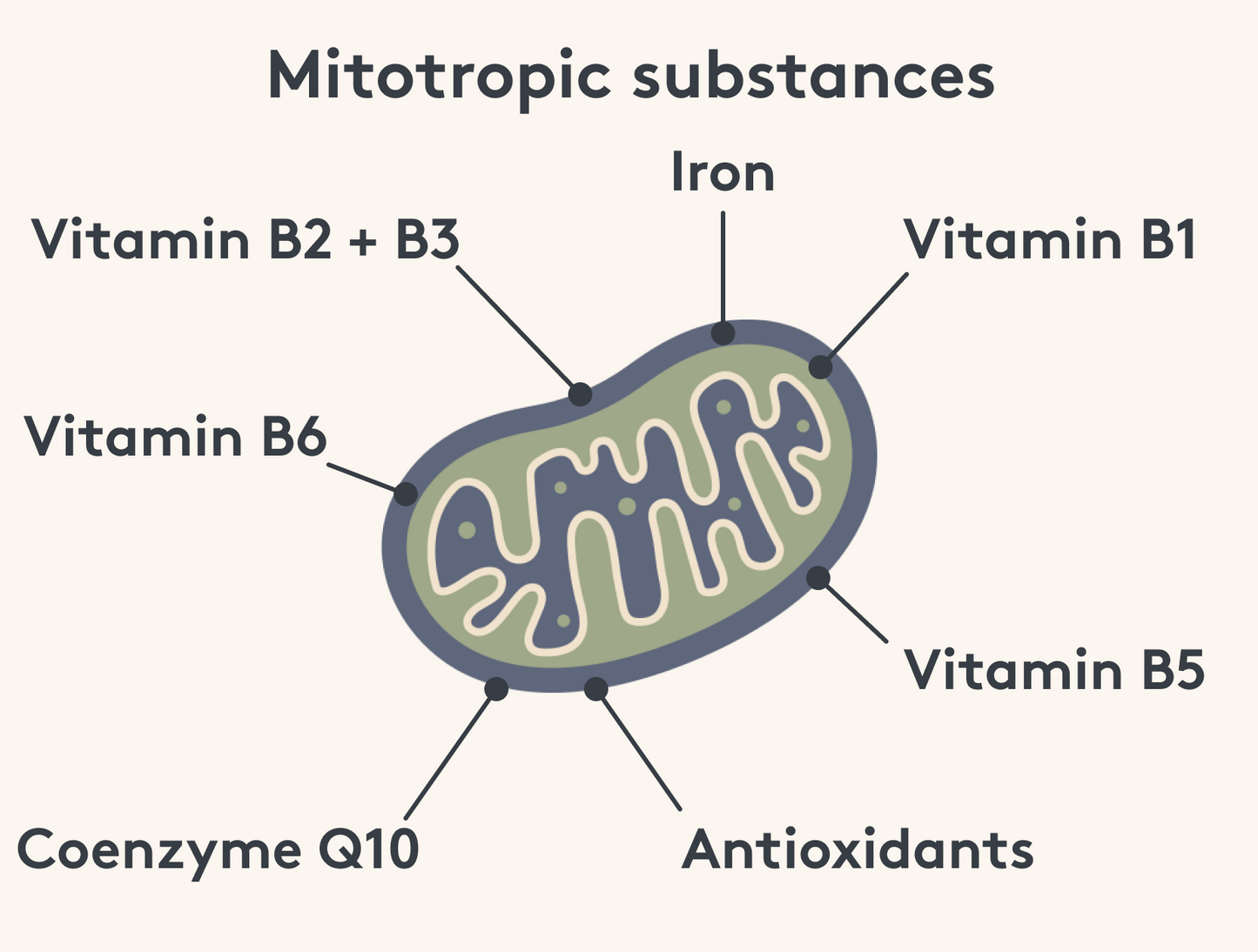

What are mitochondrial diseases?
You now know that mitochondria perform important tasks in the body, support various processes such as metabolism and are essential for the performance of your cells. If mitochondrial function is impaired, this can have serious consequences for the body.
There are various mitochondrial disorders that can also occur in people who are supposedly symptom-free. Triggers include stress, lack of sleep, an unbalanced diet and high exposure to pollutants. If the mitochondrial disorders reach a visible level, they are referred to as mitochondriopathy.
Want to find out more and know what you can do about mitochondrial disorders? Then save our blog article on mitochondrial diseases now. You can also find 8 tips on how to strengthen your mitochondria and give them new power in our blog.
Why we MITOcare: What's behind our mitochondrial mission
It is no coincidence that “MITO” is part of our name. We deliberately focus on mitochondria because many people don't (yet). MITOcare founders Dr. Alexander Hierl and Christian Burghardt deal professionally with burnout. In this stress disorder, sufferers work as long as they can until they literally call it a day.
Dr. Alexander Hierl and Christian Burghardt have observed that the mitochondria, among other things, are affected by burnout, which can lead to burnout, listlessness and extreme fatigue. Hierl and Burghardt looked for ways to help therapeutically. They realized that the products needed for an effective therapy did not yet exist and wanted to change that.
Mito knowledge for everyone
MITOcare - a company focusing on high-quality mitochondrial-oriented nutritional supplements - was founded on the basis of findings from current studies, laboratory results from practical experience and with the idea of raising awareness of the importance of mitochondria for the body and their role in chronic illness. Today, we pass on the knowledge we have gathered since our foundation in 2003 to therapists and doctors in our network. In our knowledge blog, we also give you valuable insights into the fascinating world of mitochondria.
Our mission: Everyone should know what mitochondria are, what function they fulfill and how best to support them.
Celebrating our 11th anniversary in 2024, we interviewed our founders about tips for healthy mitochondria & more.
